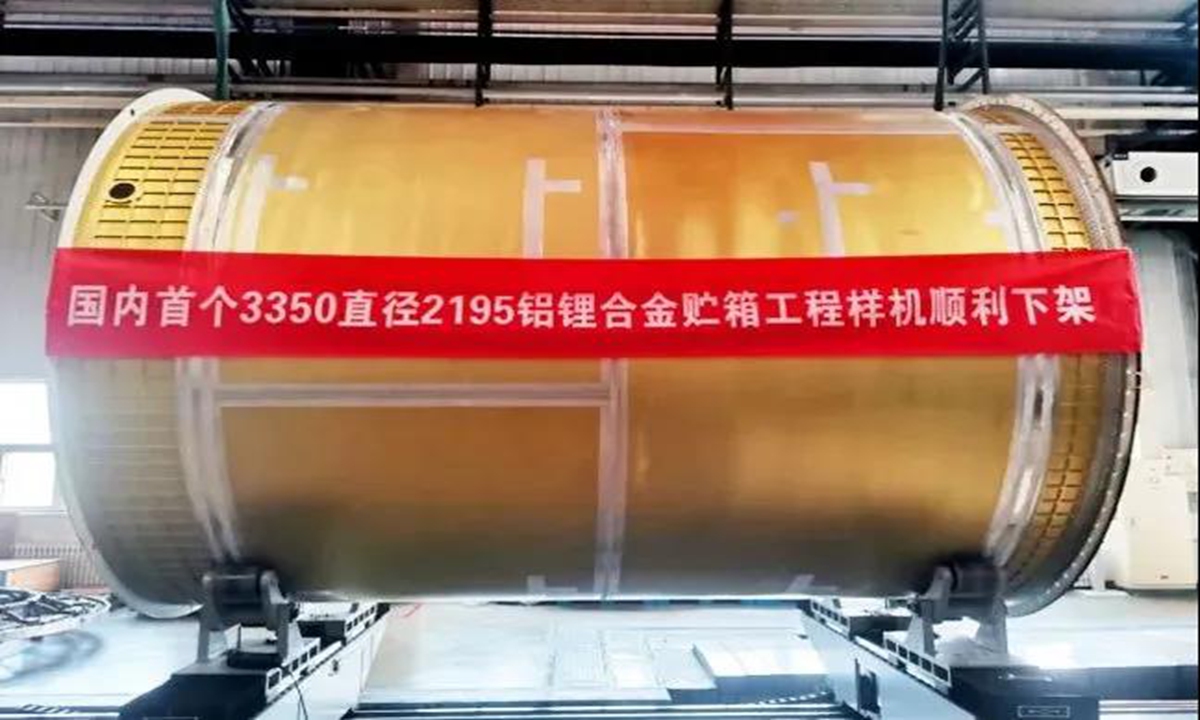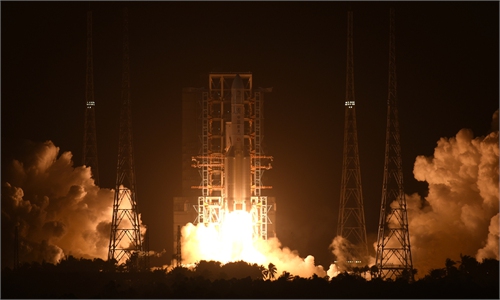New-material rocket tanks to boost China’s space launch capability and manned missions

China's first engineering prototype of 3.35-meter-diameter aluminum lithium alloy rocket tank Photo: CALT
China has successfully developed two types of rocket tank prototypes made from new lighter but stronger materials, and according to industry insiders, these advances will further help reduce the weight of rocket bodies and consequently enhance the rockets' space launch capabilities, laying the foundation for the new generation of heavy-lift and even manned rockets.
The China Academy of Launch Vehicles, a subsidiary of the state-owned space giant China Aerospace Science and Technology Corporation, said in a statement to the Global Times on Tuesday that it has recently successfully built the country's first 3.35-meter-diameter rocket tank with aluminum lithium alloy, as opposed to traditional aluminum copper alloy.
The aluminum lithium alloy rocket tank has been put through a variety of experiments and is preliminarily ready for engineering application, the academy revealed, while stressing that by using the new materials, the rocket tank prototype is around 30 percent stronger and 15 percent lighter under the same structure.
Rocket tanks make up more than half of the weight and space of a rocket body structure, and when filled with fuel, their weight makes up more than 90 percent of a rocket's total weight, an industry insider, who requested anonymity, told the Global Times on Monday.
As every gram matters in determining a rocket's launch capabilities, the lighter tank would make a huge difference, he added.
According to the academy, the aluminum lithium alloy rocket tanks will be mainly used for the top stages of a range of new carrier rockets including the Long March-5, -7 and -8, while paving the way for future development of heavy-lift launch vehicles with larger diameters and even for future manned rockets.
Apart from metal materials, the academy has also successfully built an experimental prototype of a 3.35-meter-diamter rocket tank from composite materials. The application scope of such rocket tanks will focus on the liquid oxygen environment, and compared to metal tanks, they are even lighter by about 30 percent, while providing six times more strength.
The academy said that the composite material rocket tanks also have other advantages including fewer manufacturing procedures and shorter production cycles, allowing for the reduction of comprehensive costs.
Tests on the experimental prototype are underway, according to the developer.




